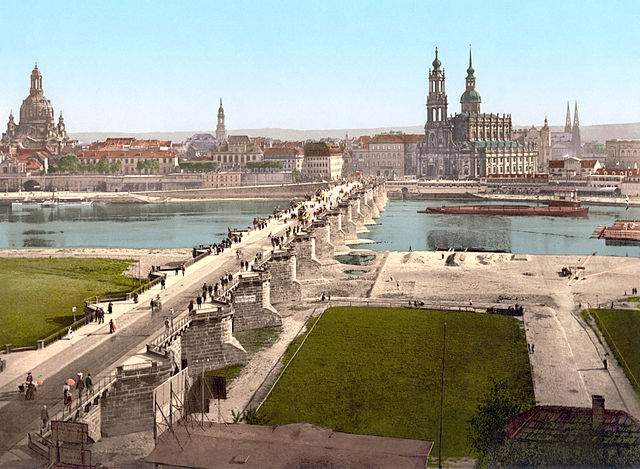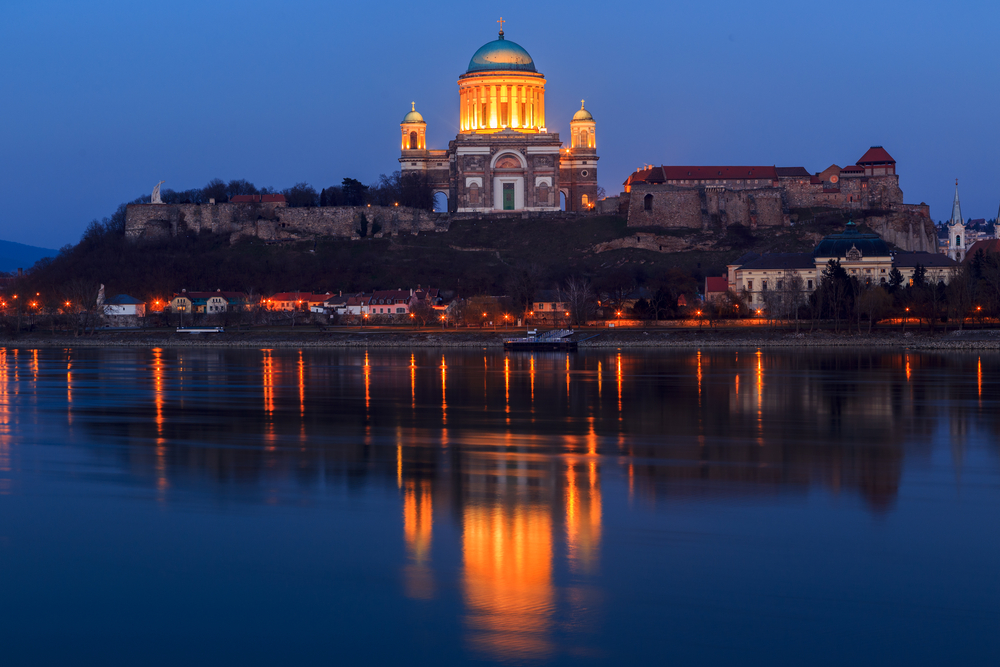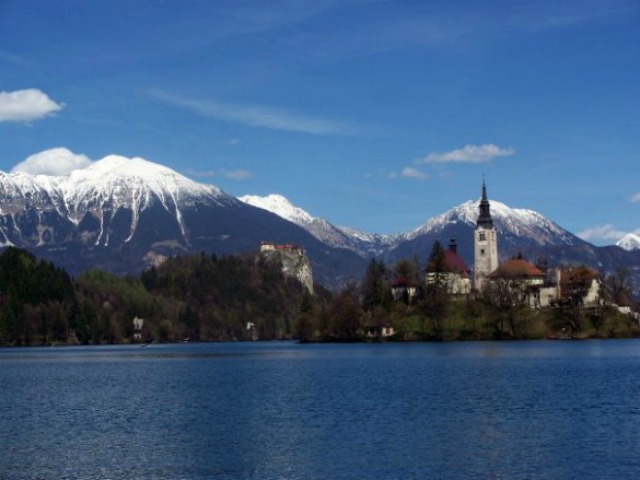These are mostly excellent cities, and when organizing from afar, it is much easier to navigate using capital cities, famous destinations and transport hubs. However, once you get to your fourth or fifth city – with the possibility of many Western European ones past or to come – you may have had enough of huge metropolises, high prices, prescribed urban attractions, and an inevitable lack of interaction with the locals. Getting away from the capitals from time to time is often the best way to get a more authentic experience of a country and its people.
For youths (25 and under) the Eurail Select Pass might be your best bet as you can take advantage of unlimited travel in five bordering countries from around $400USD. If you want to get to all six countries mentioned here, the cheapest option would be to get the Eurail Select Pass and add the separate Slovenia Pass. The Slovenia Pass is the cheapest with prices from $98USD for adults and $79 for youths.
Germany

Dresden has become a footnote in history as the city that was almost totally destroyed by the Allies during the Second World War, and as such it is uniformly overlooked as a tourist destination. But that shouldn’t be the end-all-be-all of this surprisingly beautiful and vibrant city. This fairly small city can be roughly split into two areas – the Neustadt and the Altstadt – with the River Elbe providing the boundary and a very charming place to relax and take in the attractive cityscape of the “Florence of the Elbe.”
In the compact area of the restored Altstadt there is a remarkable number of historical attractions that you will find yourself stumbling upon. In rebuilding Dresden, the Germans have somehow recaptured the mood of this historic city in a way the Poles have been unable to do in similar circumstances in Warsaw. Maybe that’s because of the elaborately painstaking way in which they went about it. A case in point is the Church of Our Lady at the heart of the Baroque Old Town, which was rebuilt by taking salvageable stones from the destroyed original and positioning them in exactly the same places in which they initially stood. A little anal but a lovely touch.
If you are using a Germany Rail Pass then it’s easy to get to Dresden from either Munich or Berlin. From Berlin you have a choice of over 10 trains a day, which normally take around 2.5 hours. At 5-6 hours, the journey from Munich is longer but just as frequent. Alternatively, if you have one of the multi-country passes, you can choose to travel from Prague, which is only about 2 hours and 15 minutes away.
Book a hostel in Dresden, check out the Dresden Travel Guide, and read 8 Places in Europe That Still Feel Untouched
Austria

Zell am See is easily accessible from Salzburg with a train connecting the two cities every hour. Making a train reservation is recommended at any time of the year, especially during the weekends.
Check out hostels in Zell-am-See and read about Austria in Christmas Markets Around the World
Poland

Aesthetically, Wroclaw is a pleasant enough city with charming, if not spectacular, squares consisting of multi-colour houses, an abundance of impressive red-brick churches scattered around, and plenty of picturesque parks to relax by the numerous canals and waterways. It’s gained a rather generous moniker of “The Venice of Poland,” which even the locals refute. It is in the friendly atmosphere and the energetic nightlife however, where the city excels.
With over 120,000 students enrolled in the numerous universities and colleges, the youthful feeling of Wroclaw is very evident, and there is a staggering number of drinking establishments to cater for the droves of thirsty scholars. Within a compact area you can find beer cellars, microbreweries, the pre-requisite English and Irish bars, traditional pubs, and lots of clubs to suit almost every musical taste.
Wroclaw is about an equal journey time-wise from Warsaw, Krakow and Prague, making this a flexible destination to visit. Trains from Warsaw and Prague (many of which change at Dresden) leave about 10 times a day and take between 5 and 7 hours. Krakow has around 6 connections per day.
Check out our adventure trips in Poland and read our Poland Travel Guide
Czech Republic

Part of the fun of Český Krumlov is getting lost in the myriad of cobblestone streets that make up the 750-year-old UNESCO World Heritage centre. In the wonderfully preserved Old Town you will find yourself surrounded by Baroque architecture with not a single angular modernist structure to ruin things (in the centre, anyway) and the highlight of the town is the Castle Complex with a garden, exhibitions, and a tower that offers excellent panoramic views.
Český Krumlov is best reached from Prague, as trains, which take 3 hours 40 minutes and change at České Budějovice, leave every 2 hours. Seat reservations are certainly recommended from Spring to Autumn as the Czechs love this place.
Book a hostel in Cesky Krumlov and read Beyond Prague: Off the Beaten Path Experiences in the Czech Republic
Slovakia/Hungary

To get a taste of both Slovakia and Hungary in one go, the alternative twin destination of Esztergom- Štúrovo is very handy. A few hours north of Budapest (or a scenic five-hour journey by pleasure boat), two distinctively different towns simultaneously straddle the Hungary-Slovakia border and the River Danube. In this border-country, you are given the unique opportunity to freely wander across the Mária Valéria Bridge between two countries that drink different beer, have different culinary specialities, and obviously speak different languages. It’s also a fairly new experience as the ease of this journey has only been possible for just over ten years due to a turbulent Twentieth Century between the two countries.
The focal point of the Hungarian side of the river is the Esztergom Basilica, the largest church in Hungary. Set against a backdrop of beautiful mountain scenery, this 71 metre high Classical building, complete with a massive dome, dominates the skyline for miles around. The historical centre of the city is pretty quiet and generally gives off a very calm and relaxing vibe, which makes a nice counterpoint to the other bustling cities surrounding it.
Esztergom and Štúrovo are incredibly well connected to their respective capital cities. Budapest Nyugati supplies Esztergom with 25 trains a day and Štúrovo has 12 trains daily from Bratislava. The journey time is about 90 minutes from either starting point.
Read 12 Less Visited Countries and Why You Should Go There Now
Slovenia

Most Slovenians love the outdoors, so perhaps you should join them. The most convenient, not to mention spectacular, place to explore the natural attractions on offer is Lake Bled. The nearby town of Bled – four kilometres from the lake – is situated on the Ljubljana-Salzburg train line where trains pass by from both ends at regular intervals. There are also plenty of inexpensive hostels and pensions to make this little jaunt off the beaten path pretty untaxing to organise.
All in all, it’s a place where you can be surrounded by local people and idyllic scenery doing something wholesome. How many times can you say you do that whilst city hopping?
If you are using the Slovenia Rail Pass, it’s easiest, quickest and most pleasing to the eye to get to Bled from Ljubljana. Trains leave every hour to Bled Lesce and take less than an hour. Alternatively, you can start from Salzburg and take one of five trains a day or a night train with a journey time of around 4 hours. A €2, 30 minute bus ride connects the railway station to the lake.
